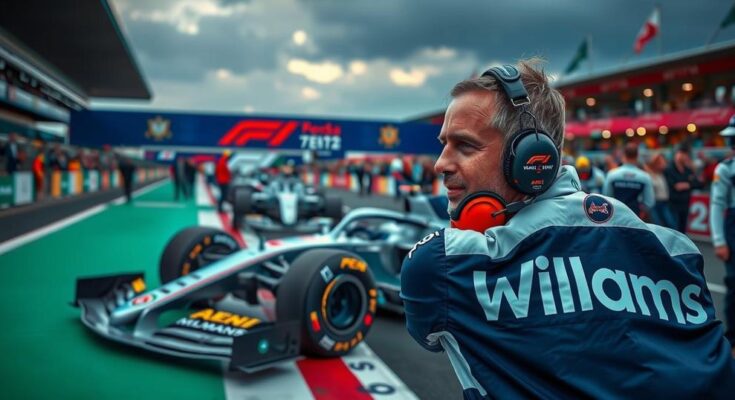Williams Racing chief James Vowles reported that repairs from five crashes in Mexico and Brazil have cost millions, marking an unprecedented sum in his career. These incidents not only reflect on the immediate need for repairs but also pose long-term challenges under current financial constraints. Vowles praised the team’s resilience but acknowledged that continued crashes could jeopardize their future investments.
In a significant revelation, James Vowles, the team principal of Williams Racing, disclosed that the financial repercussions from the recent crashes during the Mexican and Brazilian Grand Prix have reached millions of dollars. Notably, this marks a first in his extensive career spanning 25 years in Formula 1, witnessing such extensive damage incurred by the team in a compressed timeframe. The two weekends of racing saw five major accidents involving both FW46 cars, resulting in severe repairs necessary to have them ready for the upcoming Las Vegas Grand Prix.
The incidents included Alex Albon’s crashes during practice and the race in Mexico, alongside a significant qualifying crash in Brazil that prevented him from competing. The Brazilian Grand Prix was particularly challenging as the team experienced multiple crashes, including those by interim driver Franco Colapinto, which altered race dynamics significantly. The pressure intensified due to a quick turnaround from qualifying to the race, exacerbated by adverse weather conditions that led to a postponement of qualifying.
Vowles emphasized the extraordinary efforts made by the Williams mechanics to prepare the cars under these circumstances, despite ongoing reports of a parts shortage within the team. He conveyed that the extensive damage comprised five front wings, five rear wings, several gearboxes, and various other components. Speaking to ESPN, he reflected on the staggering costs involved, stating, “You are into the millions — less than 10 but more than three. It’s big numbers when you calculate where we are at the moment. The sustained damage…I hadn’t experienced anything like that in 25 years of working in the sport.”
In addition to the physical repairs, Vowles expressed pride in his team’s resilience, noting their ability to rise above the challenges faced post-accidents. He highlighted, “…the team rose up stronger than it was before and wanted to come here and prove to the world that we are still here and fight for everything we can fight until the end of the championship.”
However, Vowles also articulated concerns over the potential long-term impact on the team’s performance in 2025 under the governing financial constraints of the cost cap rule, admitting that excessive damage could hinder their spare parts availability moving forward. Therefore, he reiterated the necessity for balance between immediate performance needs and future resource allocation, stating, “If we have accidents like Brazil, we are going to be in dire trouble, but hopefully that is a one-off.”
The recent performances of Williams Racing indicate significant struggles as the team grapples with logistics, safety, and competitiveness in the realm of Formula 1. The recent races in Mexico and Brazil highlighted these challenges further, revealing the physical and financial strains placed on the team due to multiple accidents. The implications of such incidents are profound, impacting not just immediate race performance but also future development under the sport’s cost cap regulations.
In summary, the revelations made by James Vowles concerning the extensive damages and costs post-crashes underline the precarious state of Williams Racing. The immense efforts by the team to recover from the recent difficulties reflect both their determination and the harsh realities of motorsport economics. With potential implications for future performance investments, the upcoming races will be critical in the team’s ongoing battle to stabilize and improve their position in the championship.
Original Source: www.si.com




